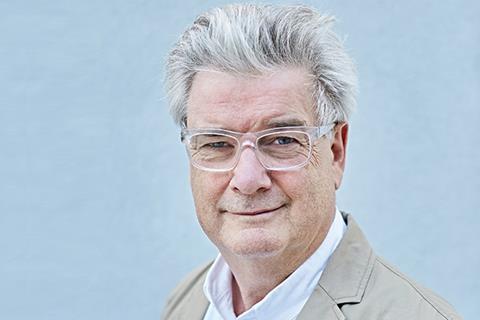We have an opportunity to stand with our Ukrainian counterparts and to offer collective support, writes Ben Derbyshire

Chris Williamson of Weston Williamson is an irrepressibly public-spirited professional. I worked with him as international vice-president during my term as president of RIBA.
It is characteristic of him to suggest that we should organise to support Ukrainian architecture students.BD ran a piece on that suggestionthis week which caught my eye.
>> Also read:Weston Williamson snapped up by engineering giant
I was reminded that, 85 years ago, the RIBA, among many other organisations, was involved in efforts to resettle displaced émigrés. Here is the story:
The original RIBA bureau was an idea born at the farewell dinner for Walter Gropius on 9 March, 1937. The dinner was an extraordinary affair with guests including Serge Chermayeff, Wells Coates, Geoffrey Faber, Maxwell Fry, Siegfried Giedion, Henry Moore, HG Wells, Christopher Nicholson, Nikolaus Pevsner, Philip Morton Shand, and László Moholy-Nagy who designed the programme. Those were the days!
Of course the circumstance then were different, but there are parallels. In the 1930s, the Modern Architectural Research (MARS) group was tirelessly proselytising the virtues of modernism, acting as a support structure for architects isolated in a conservative Britain.
As the economic and political landscape in mainland Europe became more unstable, Britain became home to many refugee architects, artists, designers and academics. They fled Nazi Germany after 1933, Czechoslovakia after the German occupation, Austria after the Anschluss in 1938 and Spain after the fall of the Republic. In Britain, MARS became a spiritual home for a number of leading modernists.
Bauhaus founder Walter Gropius was among the many émigrés to arrive here back then. He worked for a while in the practice of Max Fry and Jane Drew before heading west to found the Architects Collaborative.
2019年,彼得·默里(Peter Murray)和我在雅典娜博物馆(Athenaeum)举办了一场纪念晚宴(英国皇家艺术学会不会这么做),复制了1937年的菜单,并复制了莫霍利-纳吉(Moholy-Nagy)的菜谱。爱迪·盖尔(当然,她曾为密斯·凡·德罗设计过大厦广场)在晚宴后写信给我们说,他那一代人觉得格罗皮乌斯在某种程度上被美国腐化了,与市场利益发生了冲突。
这些文化联系是重要的,反映了英国建筑欢迎海外人才的悠久传统的全球地位。西蒙·奥尔福德呼吁建立一个21世纪的虚拟和实体的“思想研究所”。在这一点上我同意他。
The powerful cultural connections that tie Adie Gale to the 1930s MARS group and to the salvation of refugees from Europe define a role for the RIBA that has real substance. As Nadine Dorries has said, “culture is the third front”. She is right about that, and Simon’s Institute of Ideas has a central role to play.
So I, too, have written to Simon Allford suggesting that the time has come to do something. At HTA Design we have vacancies in a range of disciplines.
Like Weston Williamson, on our own we cannot contribute much. But as a profession we have an opportunity to stand with our Ukrainian counterparts and to offer collective support. Now, as in the 1930s, an infusion of eastern European culture will be nothing if not enriching.
















No comments yet